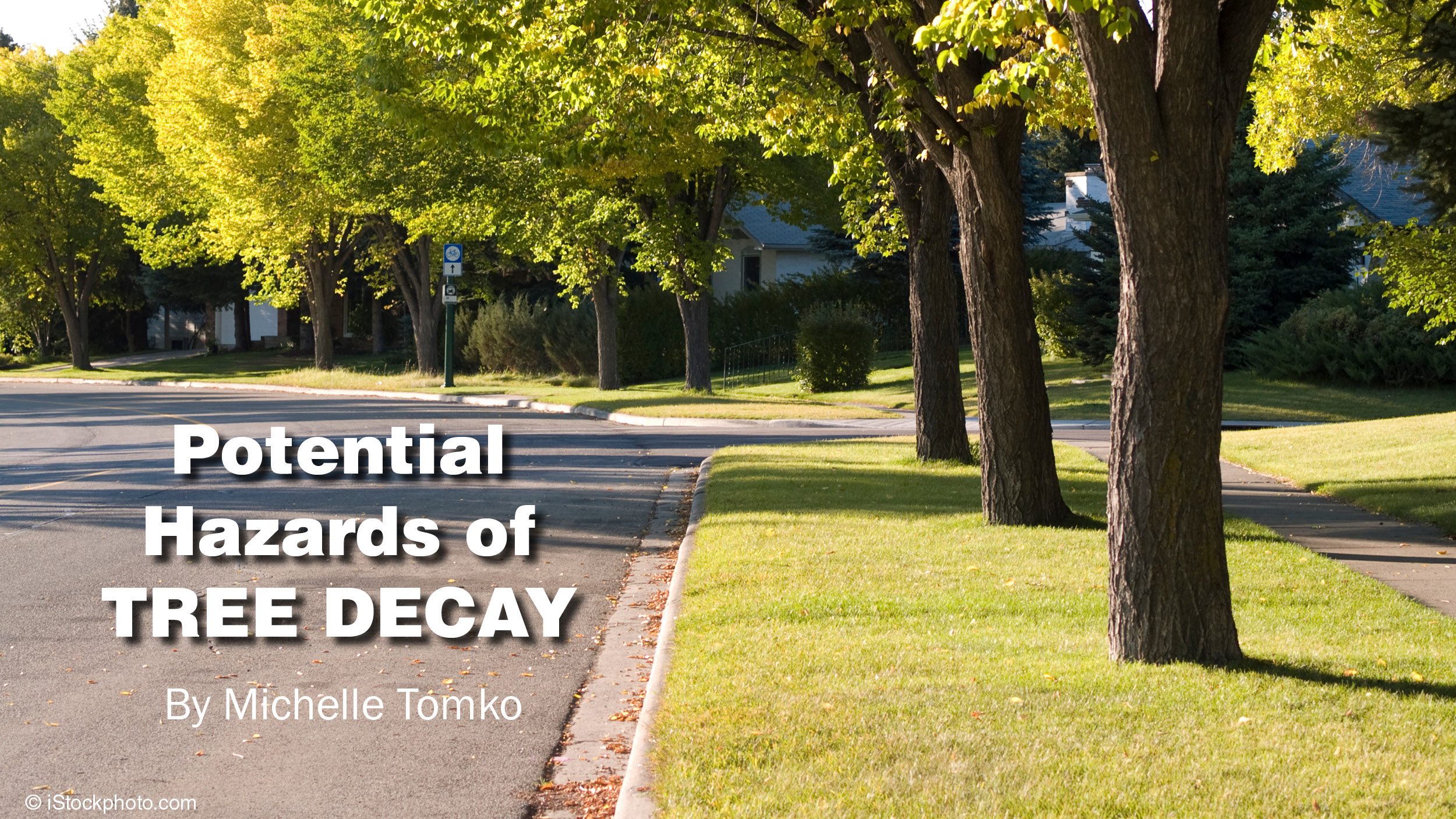
Potential Hazards of Tree Decay
Associations, and people in general, have a tendency to take their trees for granted. They stand like fixtures in our communities, providing shade, beauty, wildlife havens and defending against soil erosion. But neglected trees can decay and cause a myriad of problems if not treated correctly and promptly. Trees can potentially become liabilities, insect incubators and just plain old eyesores if not properly taken care of.
What are some causes of tree decay? To get to the root of the problem, I spoke with Chris Zinna of Growing Concern, Inc. in Cranbury, New Jersey. “Tree decay can be caused by the growth of tree trunk abnormalities, scars, wood boring insects, root girdling, damage to roots, soil compaction of roots, winter burn or sun scald,” said Zinna.
If you don’t know what root girdling is, it’s when a root just below the soil cuts into the side of the main trunk. This can constrict and reduce water and nutrient intake to the tree.
But what do you look for? Zinna pointed out some telltale signs that a tree has been damaged or infiltrated. “You would see defoliation on branches or dying limbs,” he said. “In the case of wood boring insects you would see holes. In the case of emerald ash borer you will find D-shaped holes in the ash tree.”
The emerald ash borer is a green beetle native to northeastern Asia. The female insects lay eggs in the bark of ash trees and her larvae feed underneath the bark for one to two years. Although in their native habitat they cause little damage, in North America the beetles are an invasive species that are exceptionally destructive to ash trees. What are other types of insects that damage trees in the northeast? The southern pine beetle, eastern tent caterpillar, bag work, root feeding white grub and lace bug are others. According to Zinna “the Emerald Ash borer seems to be one of the biggest issues today.”
But no one likes the idea of cutting down a tree that has historical significance, provides needed shade to a particular area or is of a certain age. So is it always necessary to remove a tree if there are signs of decay, or can other measures be taken? “It depends on the degree of the decay and what is causing it,” said Zinna. “If it is caused by insects or disease it may be treated. Poor growth can be corrected by corrective pruning.”
But there are other circumstances where there may not be a quick fix. “Stress, possible lack of sunlight, water, nutrients or if the roots have possibly too much water the tree may become a hazard, and may need to be removed,” he said.
With summer just around the corner and groundskeepers anxious to stretch their green thumbs, what are some preventive measures associations can take to protect trees? “Corrective pruning, removing dead wood, removing abnormal growth, pruning practices that will allow the tree to prosper in a controlled environment are some preventive measures,” said Zinna.
Even though forests thrive on their own, regular maintenance on your property will better your chances of avoiding problematic, sick trees. Zinna recommends a regular schedule to inspect trees. And when is the best time to do that? “Certainly coming out of winter into spring as the leaves start to push, the trees should be monitored for the obvious signs of tree stress such as dropping leaves, eaten leaves, tree die back, and abnormal leaf size. If any of these signs occur it needs to be researched further, diagnosed and treated accordingly,” he said.
Like most association maintenance issues, early detection is a key point to success. If you find yourself tree-hugging on the property, keep your eyes open and look for the early stages of potential grief down the road.